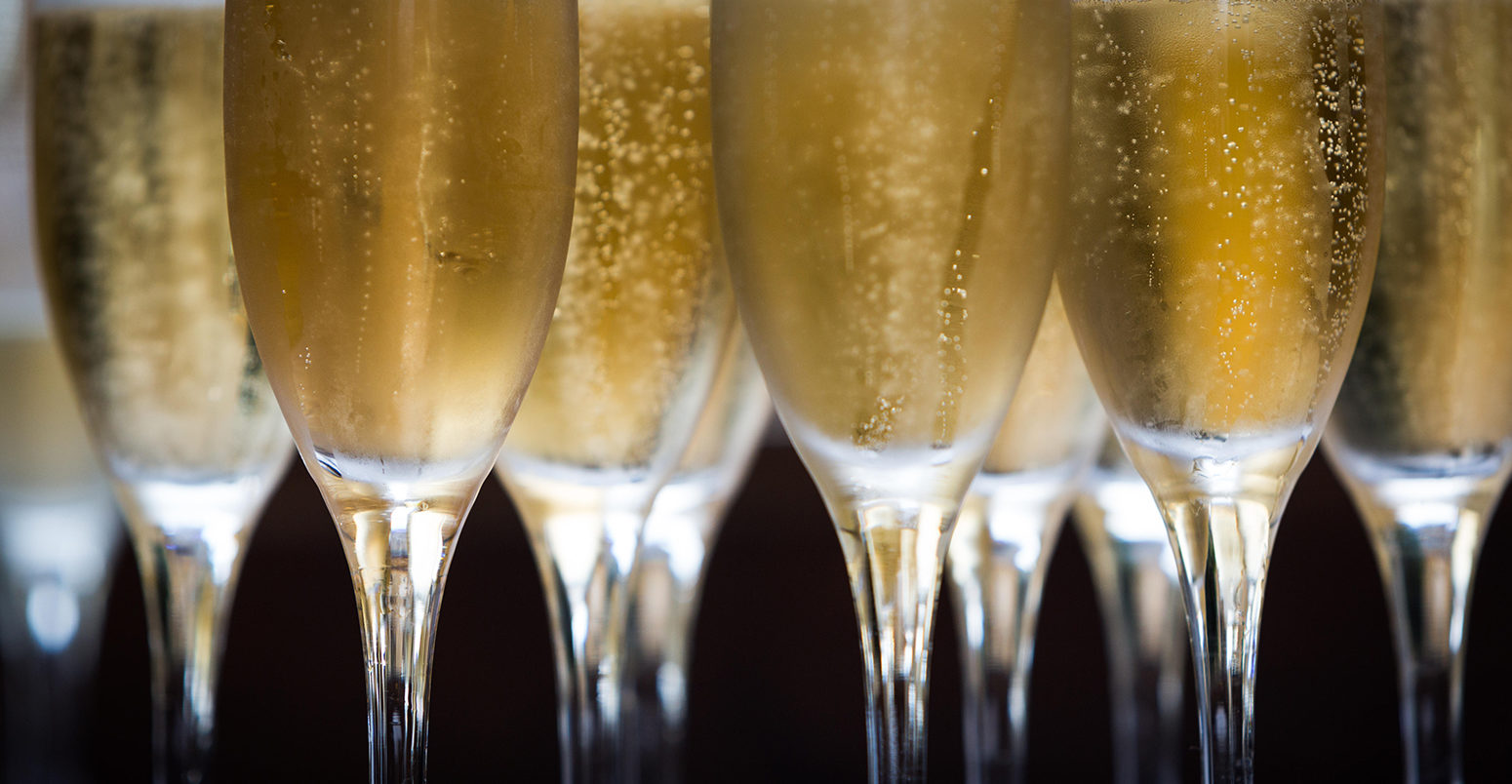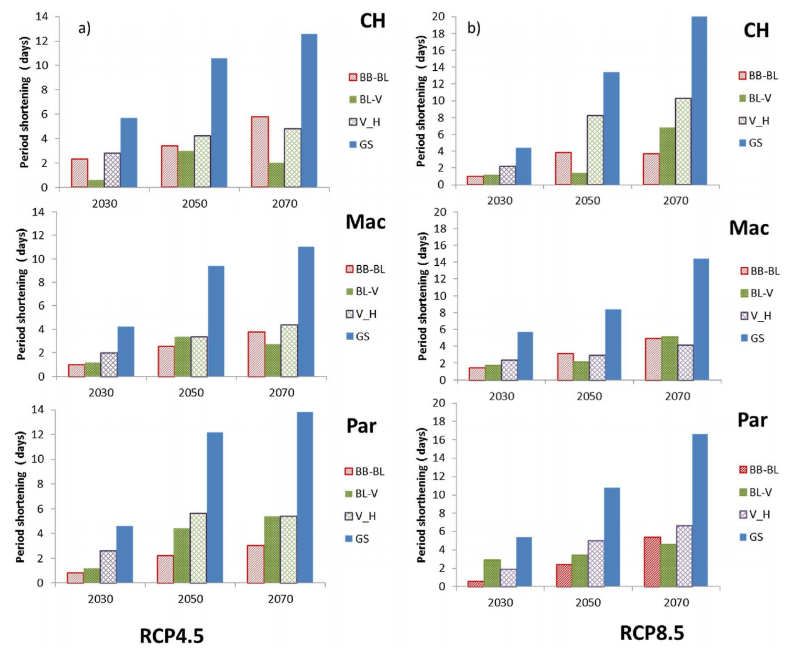
Climate change could tarnish the flavour of cava, study suggests
Daisy Dunne
08.22.17Daisy Dunne
22.08.2017 | 2:58pmCatalonia in northeastern Spain is famous for its cava – a sparkling wine which is produced in the same way as its French counterpart, champagne.
But new research, published in the journal of Agricultural and Forest Meteorology, suggests that a changing climate could harm its rich, aromatic flavour.
Key to cava’s unique taste is the blend of white grapes that are indigenous to Catalonia, such as Macabeo, a variety known for its freshness, and Paralleda, a grape that is said to be creamy and rich.
Warmer, drier conditions could mean these grape varieties will ripen more quickly and be ready to harvest increasingly early in the year, the study finds, which could impair the flavour, aroma and overall quality of the wine.
No cause for celebration
To understand how the grapes that go into cava are affected by variations in temperature and rainfall, the study analysed yield and harvest timings in a Catalonian vineyard between 1998 and 2012.
![]()
The study focuses on two of the main grape varieties used in producing cava – Macabeo and Paralleda – as well as a Chardonnay, the famous sharp-tasting French grape, which is sometimes used too. Another traditional grape variety for cava, Xarel-lo, was not studied.
Using the observed data, the study’s author then created a mathematical model to simulate how the grapes are likely to fare under future climate change.
Catalonia is expected to see higher temperatures and less rainfall through this century. For example, under a moderate warming scenario (RCP4.5), average temperatures during the grape growing season could rise by up to 3.2C by 2070, compared to those observed during the study period, the research says. If global greenhouse gas emissions aren’t curbed (as in scenario RCP8.5), the rise in temperatures could reach 4.4C.
![]()
The combination of warming temperatures and drier conditions is likely to reduce the amount of water available for the vineyards, the study says.
In the Mediterranean, water deficits – when more moisture is lost from the land through evapotranspiration and runoff than is gained from rainfall – usually develop during the dry summer. Climate change could increase these deficits during the various stages of grape growth by up to 30% under RCP4.5 by 2070 and by up to 60% under RCP8.5, the study finds.
These changing conditions are expected to shift the timing and length of the growing season by causing the grapes to speed up each stage of their life cycle.
Grapevines fine-tune each stage of their development, from first bud to harvest, according to changes in temperature. Rising spring temperatures could prompt the plants to start budding earlier in the year, which may have a knock-on effect on the timing of ripening and harvest, previous research suggests.
The charts below illustrate how climate change could shorten the periods of first budding (red), “veraison”, or ripening (green), harvest (cross hatch) and the overall growing season (blue) of Chardonnay (upper charts), Macabeo (middle) and Paralleda (lower) grape varieties. The charts are also divided by scenario, with RCP4.5 on the left and RCP8.5 on the right.

Charts showing projected shortening impact of climate change on the stages of the growing season under RCP4.5 (left) and RCP8.5 (right) for Chardonnay (CH), Macabeo (Mac) and Paralleda (Par). Red represents the period between first bud break and bloom, green indicates the time of veraison (ripening), green cross hatch shows harvest time and blue represents the entire growing season Source: Ramos et al. 2017
By 2030, the overall growing season for Chardonnay, Macabeo and Paralleda will be four to five days shorter under moderate warming, the research finds. By 2070, the growing season is expected to be up to 14 days shorter under moderate warming and up to 20 days shorter if emissions aren’t curbed.
Warmer conditions are also likely to shift the growing season to earlier in the year, according to study author Dr Martín Ramos, an environmental scientist from the University of Lleida in Spain. In his new research paper, he writes:
“Among the varieties analysed in this research, there was up to one month’s difference in the phenology [life cycle] timing, with Chardonnay being the one with the earliest response [shift in growing season timing] and Parellada with the latest. The phenology response depended on the cultivar [grape variety], and although the response may also depend on soil properties, the results give us an idea of potential changes.”
Fizzling flavours
Changes to the timing and length of the growing season could have a number of far-reaching consequences for cava, the research finds.
For example, the advance in growing time could mean that grape ripening could take place in the heat of summer instead of early autumn, which may have a considerable impact on the flavour of the wine. In particular, exposure to to higher temperatures during ripening could cause cava to become more acidic and sugary, as well as more alcoholic.
The grapes could also have to contend with less rainfall, which could bring further unsavoury consequences for winegrowers. Previous research suggests that a lack of water close to the time of harvest can reduce the size of the grapes and cause changes in the ratio of skin to pulp weight, which is thought to influence aroma. In his research paper, Ramos adds:
“Temperature is a less decisive factor concerning vintage quality than water deficit stress. The timing and intensity of water deficits influence the extent of alterations occurring in berry metabolism and therefore in wine colour and flavour.”
Bursting the bubble
The findings are important for sparkling wine growers who will need to adapt to climate change, says Elizabeth Wolkovich, a professor from Harvard University who was not involved in the study but has previously published research on how warming could affect the French wine season.
However, basing the model on data taken from just one vineyard makes it difficult to draw comprehensive conclusions, she says, because different growers tend to use varying criteria when deciding what the best time to harvest is. She tells Carbon Brief:
“Measuring maturity is tricky – growers choose to harvest at different times depending on many things including the weather that year, the wine style and related preferences based on wine style and the winemaker. That means extrapolating from one set of data for one location and wine style to others is tricky.”
Ramos, M. C. (2017) Projection of phenology response to climate change in rainfed vineyards in north-east Spain, Agricultural and Forest Meteorology, doi:10.1016/j.agrformet.2017.07.022

